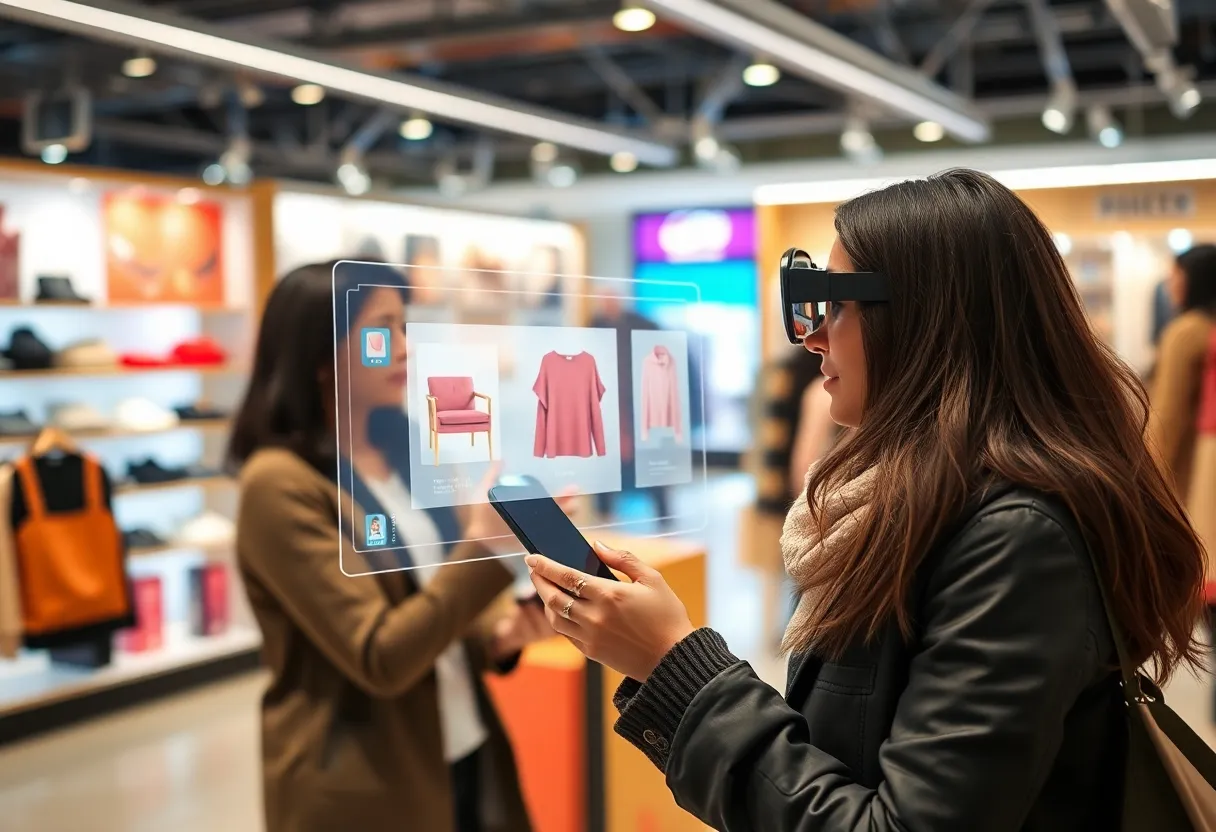

A customer experiencing augmented reality to engage with products in a digital marketing strategy.
Article Sponsored by:
Real Internet Sales is a digital marketing agency located in Columbia, South Carolina. We specialize in website design and development, SEO, social media management, online advertising, AI integration, and workflow automation. Our services also include affiliate marketing and digital strategy.
Real Internet Sales also offer specialized programming for real estate firms, using IDX and RETS feeds to automatically populate MLS properties on their websites for improved property listings and sales. We also work with clients in the restaurant, tourism, and e-commerce industries to enhance their digital presence and streamline operations.
In the continuously evolving landscape of digital marketing, businesses must find innovative methods to interact with their audience. One such method gaining traction is augmented reality (AR). By merging digital information with the real world, AR provides unique opportunities for brands to enhance customer engagement. This article elaborates on how organizations can leverage augmented reality for impactful digital marketing strategies.
Augmented reality overlays digital content onto the physical environment. This fusion creates an immersive experience, allowing users to interact with both real and virtual elements simultaneously. AR can be accessed via smartphones, tablets, or specialized AR glasses, making it highly accessible for consumers. As mobile technology advances, AR has become a powerful tool for brands aiming to capture attention and foster engagement.
Employing AR in digital marketing strategies can offer several advantages:
AR creates an interactive and dynamic method for customers to engage with products. Instead of passive viewing, customers can experience a product or service actively, which increases their emotional response. Engaging consumers in this way can lead to higher retention and conversion rates.
Innovative use of AR demonstrates a brand’s forward-thinking approach. When companies adopt modern technology, it can positively influence consumer perception, leading to a competitive advantage. Brands that utilize AR effectively are often viewed as leaders in their industries.
AR offers a unique way for consumers to visualize products before purchase. For instance, furniture retailers like IKEA have developed AR applications allowing customers to see how a piece of furniture would look in their homes. This capability can significantly reduce the likelihood of returns, directly impacting profits.
Integrating AR into a marketing campaign requires strategic planning. Here are essential steps to consider:
Understanding your audience is crucial. Identify segments based on demographics, interests, and behaviors. Tailoring the AR experience to meet the specific preferences of these groups can increase engagement levels.
Establish clear goals for using AR in your marketing strategy. Whether aiming for increased brand awareness, higher sales, or improved customer loyalty, defining objectives will guide your AR development process.
The AR technology landscape is diverse. Brands can choose between mobile apps, web-based AR, or AR-compatible devices based on their requirements. Evaluating the pros and cons of each option can determine the most effective delivery method for your audience.
Examining successful case studies provides useful insights:
Sephora’s Virtual Artist app allows users to try on makeup virtually. By utilizing AR, customers can experiment with different looks before making purchases. This engagement strategy has proven effective in enhancing the customer shopping experience.
While a gaming application, Pokémon GO showcases how AR can create massive consumer engagement. Brands collaborated with the game to create special in-game events, driving foot traffic to physical stores and fostering a unique brand presence in the AR landscape.
Adidas developed an AR app that lets customers scan posters to access exclusive content, including product information and limited-time offers. This innovative approach not only engages customers but also encourages them to explore more about the brand.
Despite the benefits, adopting AR technology comes with challenges:
Creating AR experiences can be expensive. Companies need to allocate resources for app development, maintenance, and updates. Budgeting appropriately is essential to ensure a positive return on investment.
The success of an AR initiative heavily relies on user experience. If the AR experience is too complicated or does not meet consumer expectations, it can lead to frustration. Conducting thorough testing and adopting user-friendly designs is vital.
AR requires various technologies that may not be universally available or supported. Older devices or limited internet access could hinder the audience’s ability to engage with AR content. Being aware of these limitations is crucial for effective implementation.
Once implemented, measuring the effectiveness of AR initiatives is crucial:
Monitor user interactions with the AR content. Metrics such as time spent on the platform, click-through rates, and social sharing can provide valuable insights into customer engagement levels.
Evaluate how AR initiatives influence purchasing decisions. Comparing conversion rates before and after AR implementation can indicate its effectiveness in driving sales.
Obtaining feedback from users is essential. Surveys and reviews can provide information on user experience and areas needing improvement. This feedback loop allows brands to refine their AR offerings continuously.
The potential of AR in digital marketing continues to expand:
Advancements in technology will further enhance AR experiences. Improved hardware and software will provide richer, more dynamic content, leading to increased customer engagement.
Combining AR with artificial intelligence will create personalized experiences. Brands can tailor AR content based on individual user behavior, preferences, and purchase history.
As more businesses recognize the benefits, AR will become a standard marketing tool. From retail to education, industries will implement AR to improve customer interactions and experiences.
Augmented reality represents an exciting frontier in digital marketing. By embracing this technology, brands can effectively enhance customer engagement, improve brand perception, and increase sales. While challenges exist, the benefits of AR far outweigh the obstacles. As technology advances, businesses must adapt and innovate, incorporating augmented reality into their marketing strategies to maintain competitiveness and drive success.

7001 St Andrews Rd #329 ,
Columbia, SC 29212,
United States
Phone: (+1) 803 708 5514
Success! Thanks {{first_name}}!
Oops! Something went wrong. Please try again.
News Summary A deadly accident on Sunset Boulevard in Lexington, SC, caused significant traffic disruptions…
How to Use Trend Monitoring to Stay Ahead in Your Digital Marketing Strategy In an…
How to Choose the Right Roof Design for Maximal Summer Heat Reflection The Importance of…
News Summary Greenville recently celebrated Michelin North America, Inc.'s 50-year presence in South Carolina. Local…
News Summary In an unexpected twist, 43 monkeys escaped from the Alpha Genesis Primate Research…
News Summary South Carolina has officially been declared the top growth state in 2024 by…